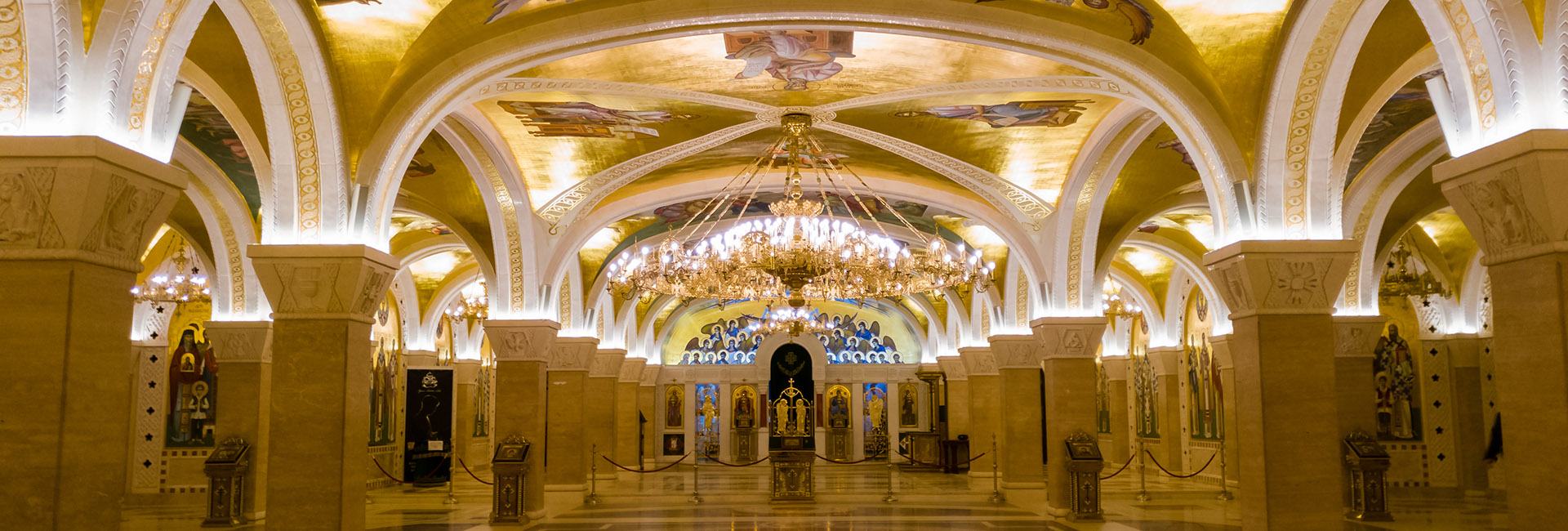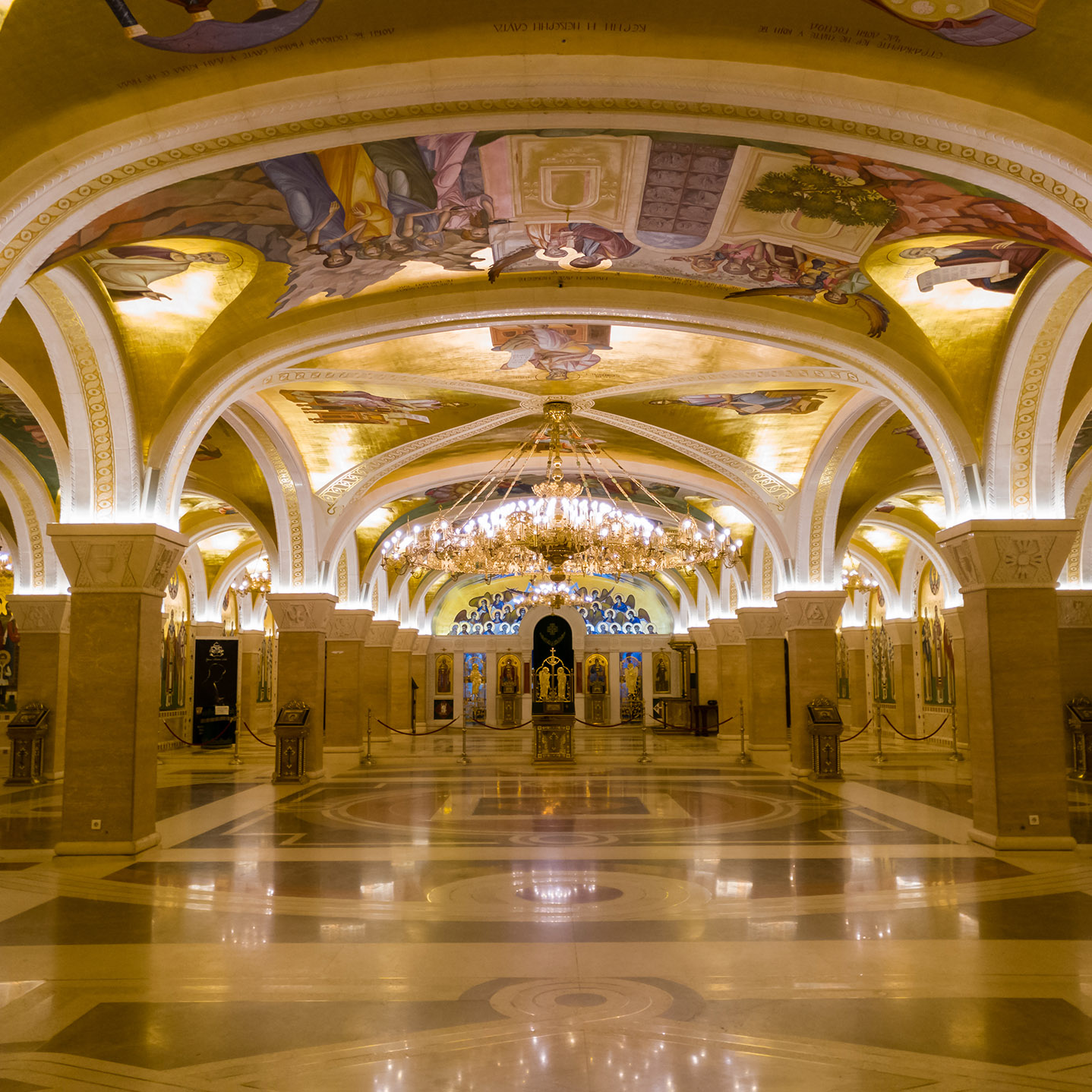From Vision to Plateau
At the turn of the 19th and 20th centuries, a lively debate unfolded over where to build the great Temple of Saint Sava. Various sites across the wider Vračar area were proposed — from Čupina Hill on Tašmajdan to the vicinity of Crveni krst. Finally, in 1894–1895, the Vračar Plateau was chosen, symbolically connected to the burning of Saint Sava’s relics by the Ottomans, brought from the Mileševa Monastery and set aflame here in the late 16th century. A significant portion of the land was donated by the Scottish philanthropist Francis Mackenzie — and thus began the modern story of Belgrade’s skyline.
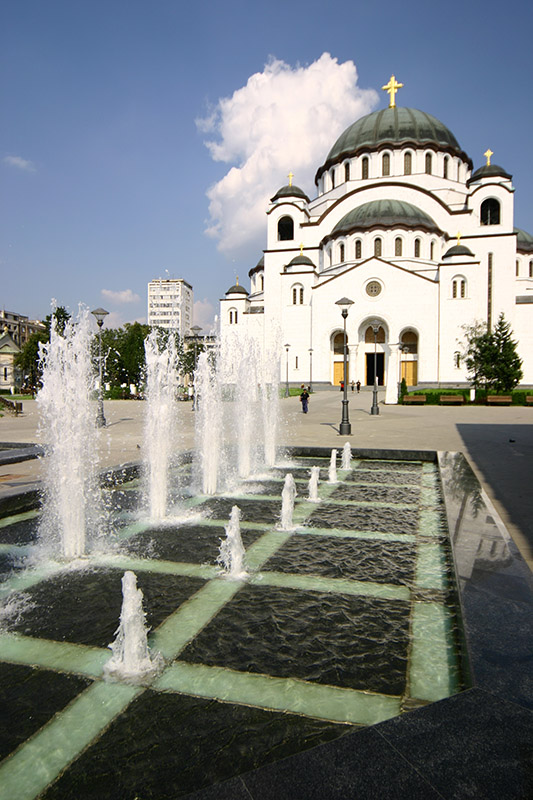
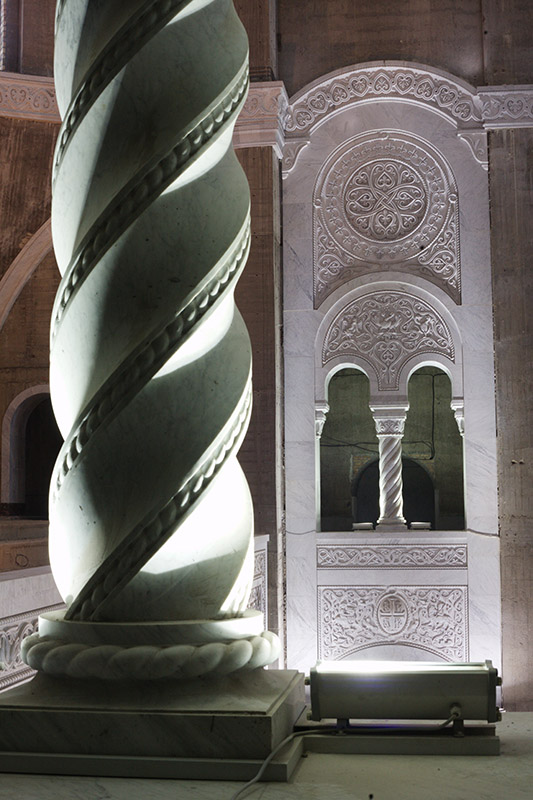
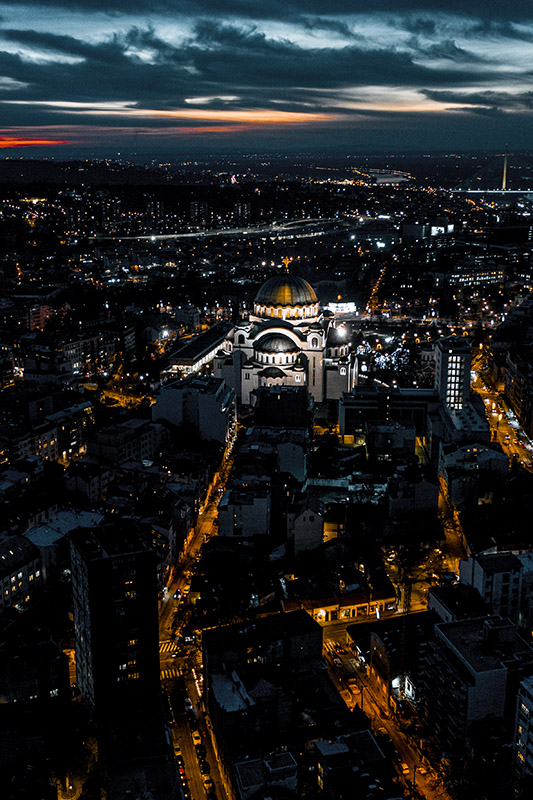
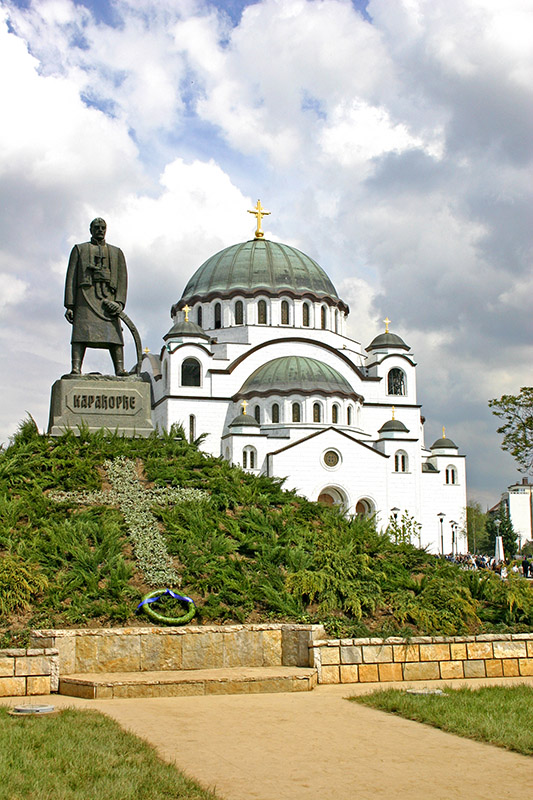
Architecture of a Dream
The project was signed by architects Bogdan Nestorović and Aleksandar Deroko in the spirit of the Serbian-Byzantine style, with a clear reference to the Hagia Sophia in Istanbul. Construction began in 1935, was interrupted during World War II, and resumed in 1985. An engineering feat followed in 1989, when the 4,000-ton dome was lifted into place; the exterior was completed in 2004. Today, the temple dominates the plateau — 91 meters long, 81 meters wide, and 79 meters high including the cross atop the dome.
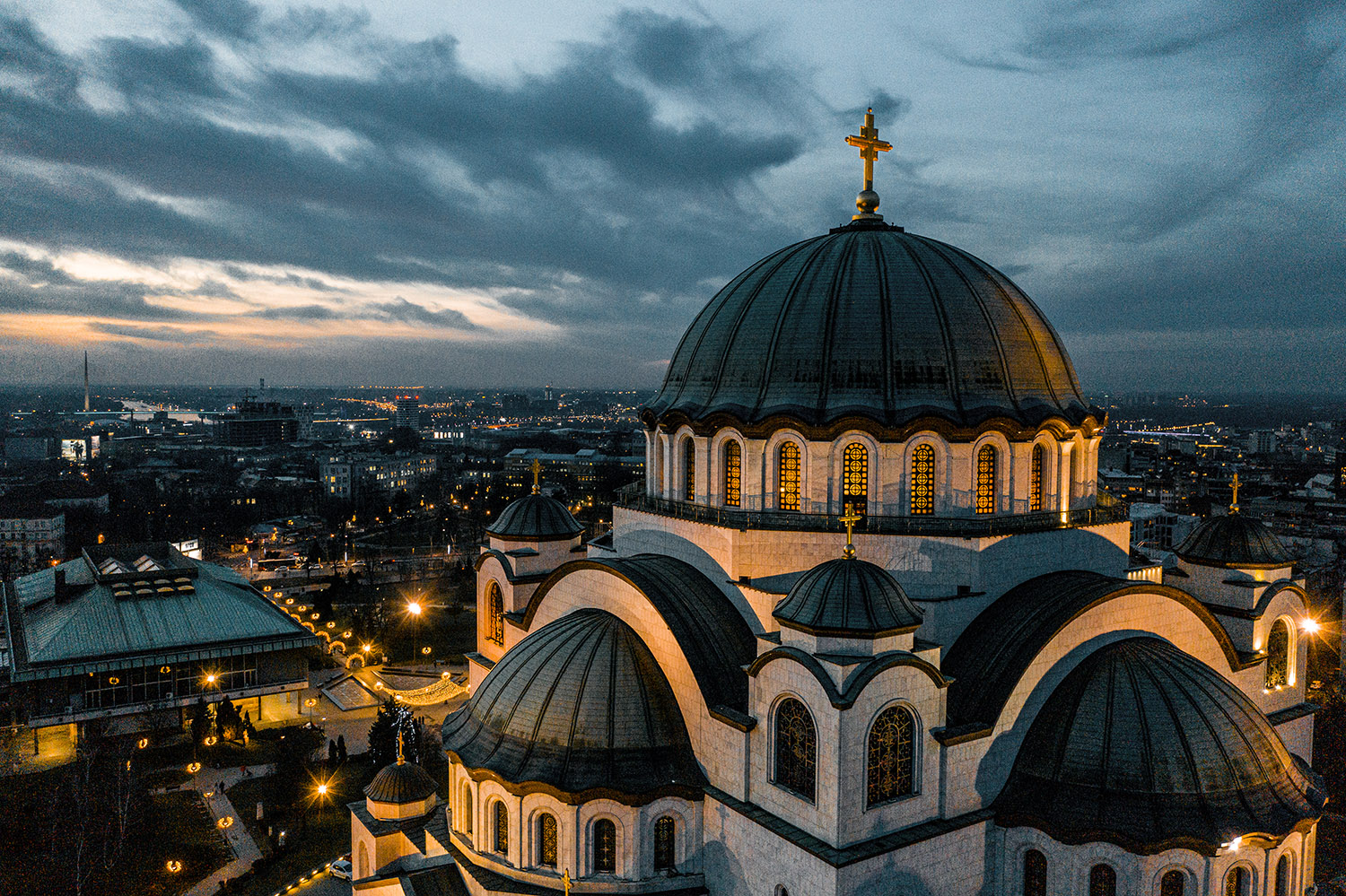
Stepping inside, you enter a river of light made of mosaics. The interior is adorned with about 15,000 m² of mosaic decoration, created in the past decade through remarkable artistic collaboration — a work that symbolically united the century-long dream of its builders. The completion of the monumental mosaic ensemble was announced in 2020. In the central dome rises the composition of the Ascension, covering around 1,230 m² — one of the largest curvilinear surfaces ever decorated with mosaics. As you lift your gaze, the golden glow and bluish hues seem to move with your breath; whisper a wish — they say the marble and glass “remember” silent prayers.
An Interior that Shimmers
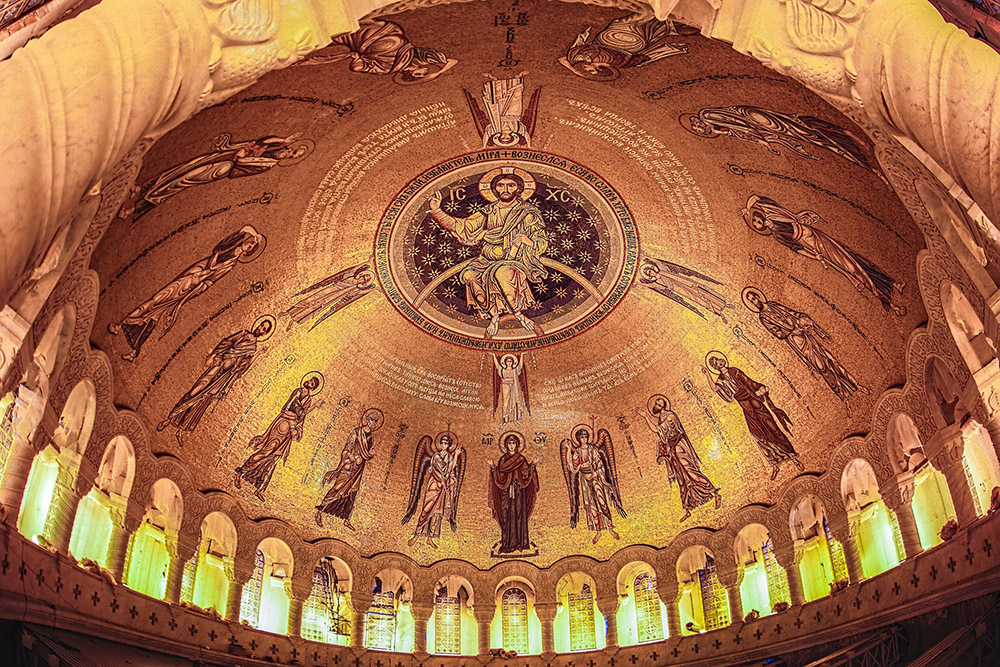
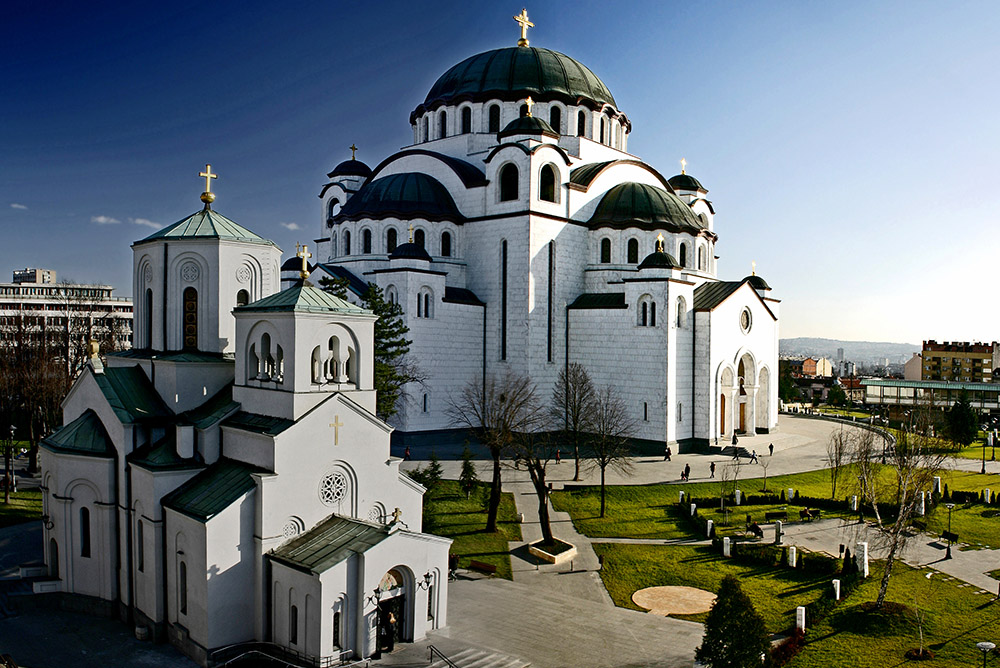
The Temple as a Stage
In front of the Temple of Saint Sava, lively events often take place, giving a special rhythm to Belgrade evenings. The most remarkable is the traditional Yule log lighting on Christmas Eve, when the plateau becomes a gathering place for thousands of visitors. Accompanied by choirs, the scent of incense, and a festive fireworks display, the moment offers a unique experience merging tradition and the city’s contemporary spirit. Throughout the year, smaller festivals, concerts, and cultural programs bring life to the plateau, making it a vibrant urban square.
Visiting the Temple of Saint Sava is therefore not just entering one of the largest Orthodox sanctuaries, but also an opportunity to experience Belgrade at its most ceremonial. Plan your visit, take a walk through Vračar, and become part of the everyday magic created by this temple and its plateau.
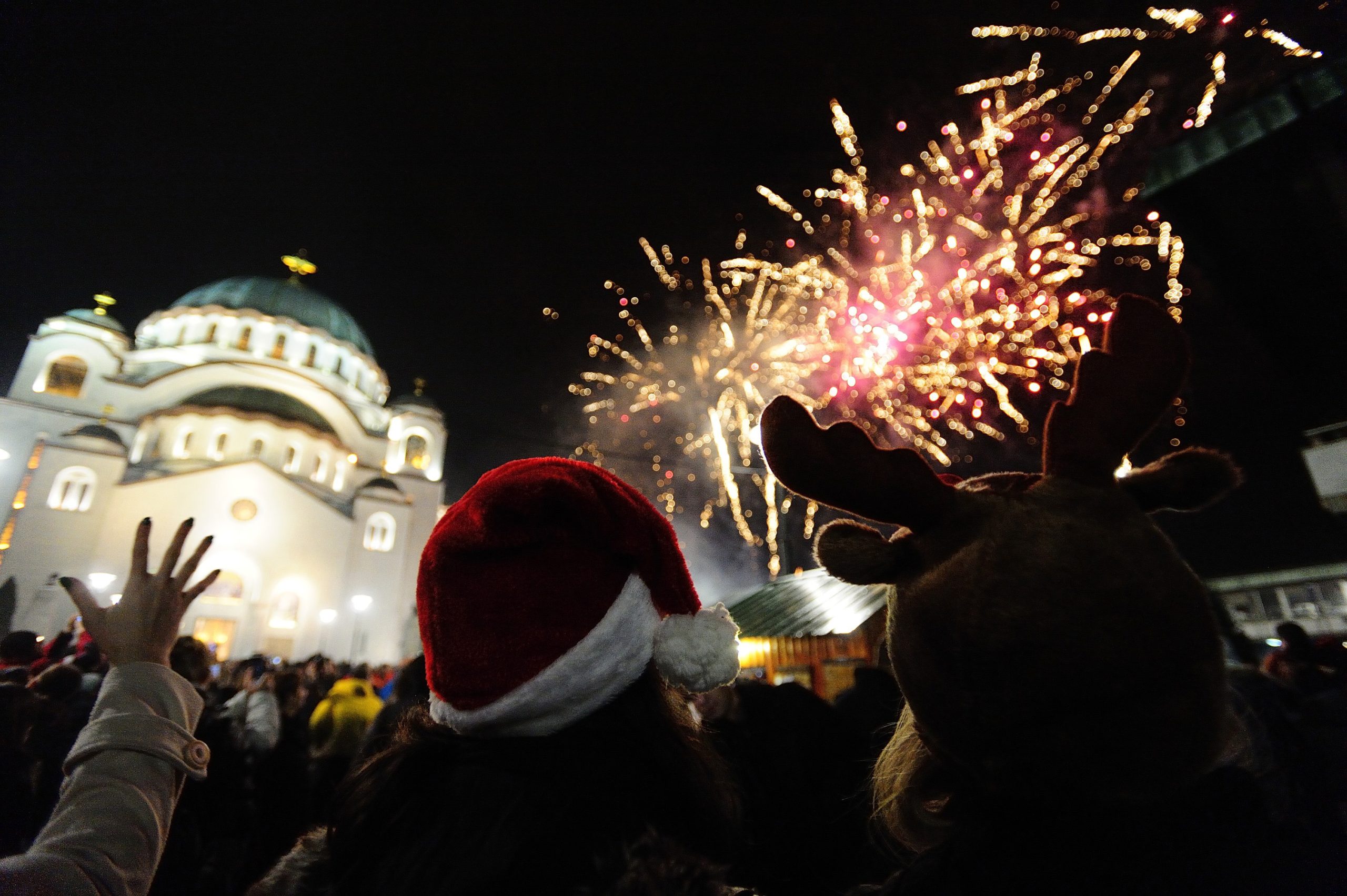
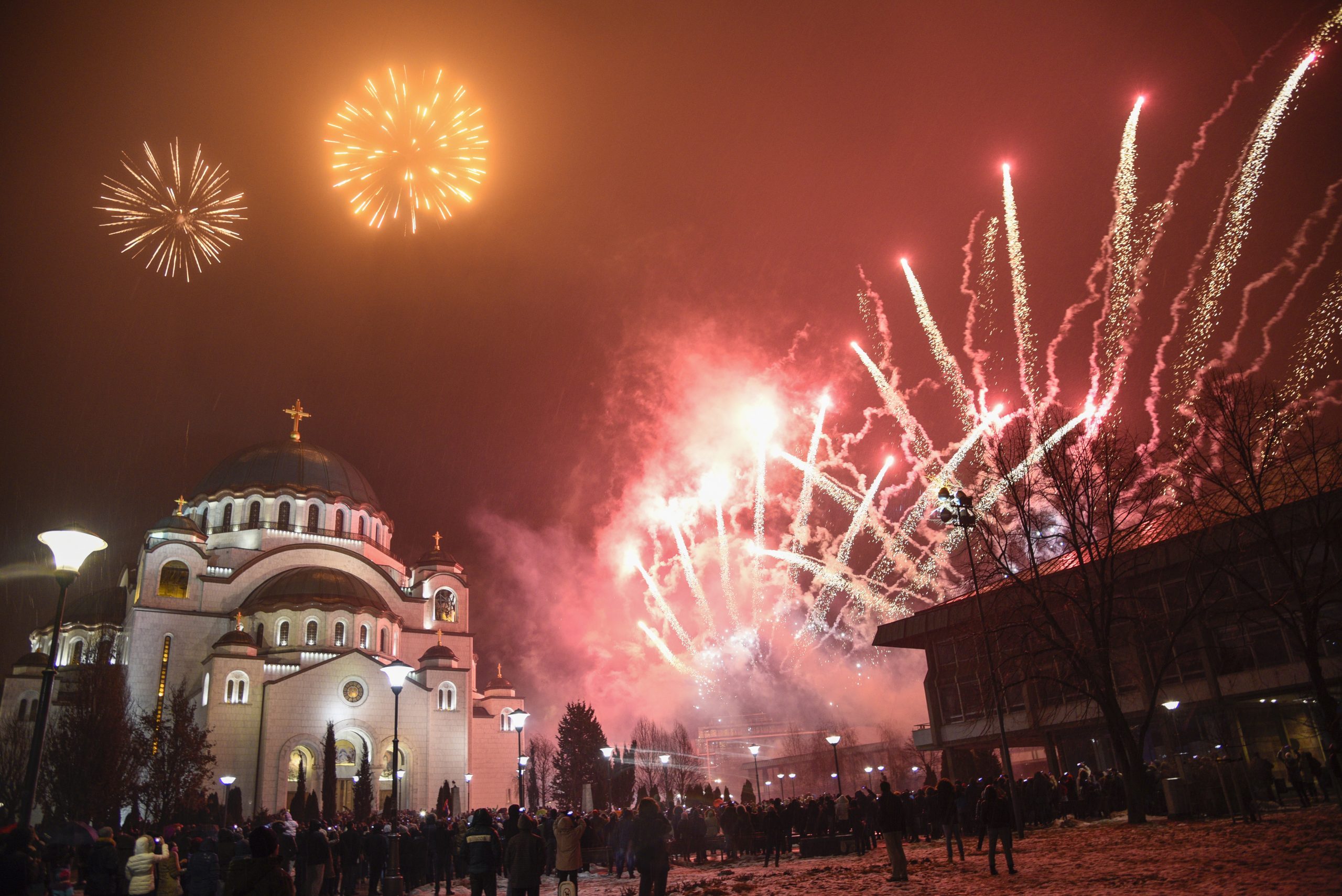
Useful Information for Visitors
Address: Krušedolska 2a, Belgrade (Vračar)
Opening hours: Daily approximately 08:00–20:00 (chapels 07:00–19:00). For the exact schedule of services and event announcements, visit the official website: www.hramsvetogsave.rs
- Individual visits: Entrance is free; visitors are encouraged to come outside liturgy times and maintain quiet.
- Group tours: For group announcements, guides, and special programs (crypt, museum exhibition), contact the Temple’s tourism and information service:
✉️ info@hramsvetogsave.rs / turizamimarketing@hramsvetogsave.rs
☎️ +381 11 243 25 85
*Translation powered by AI


